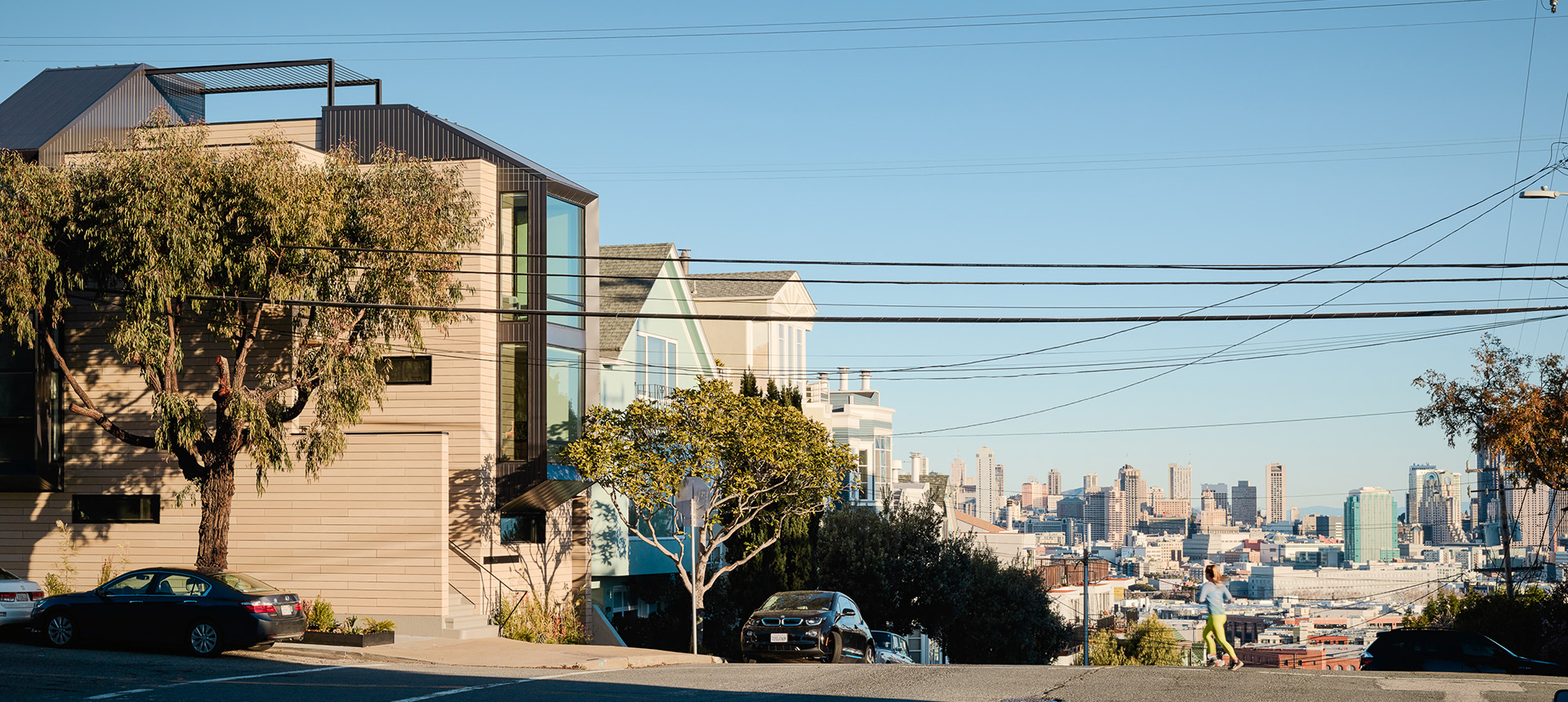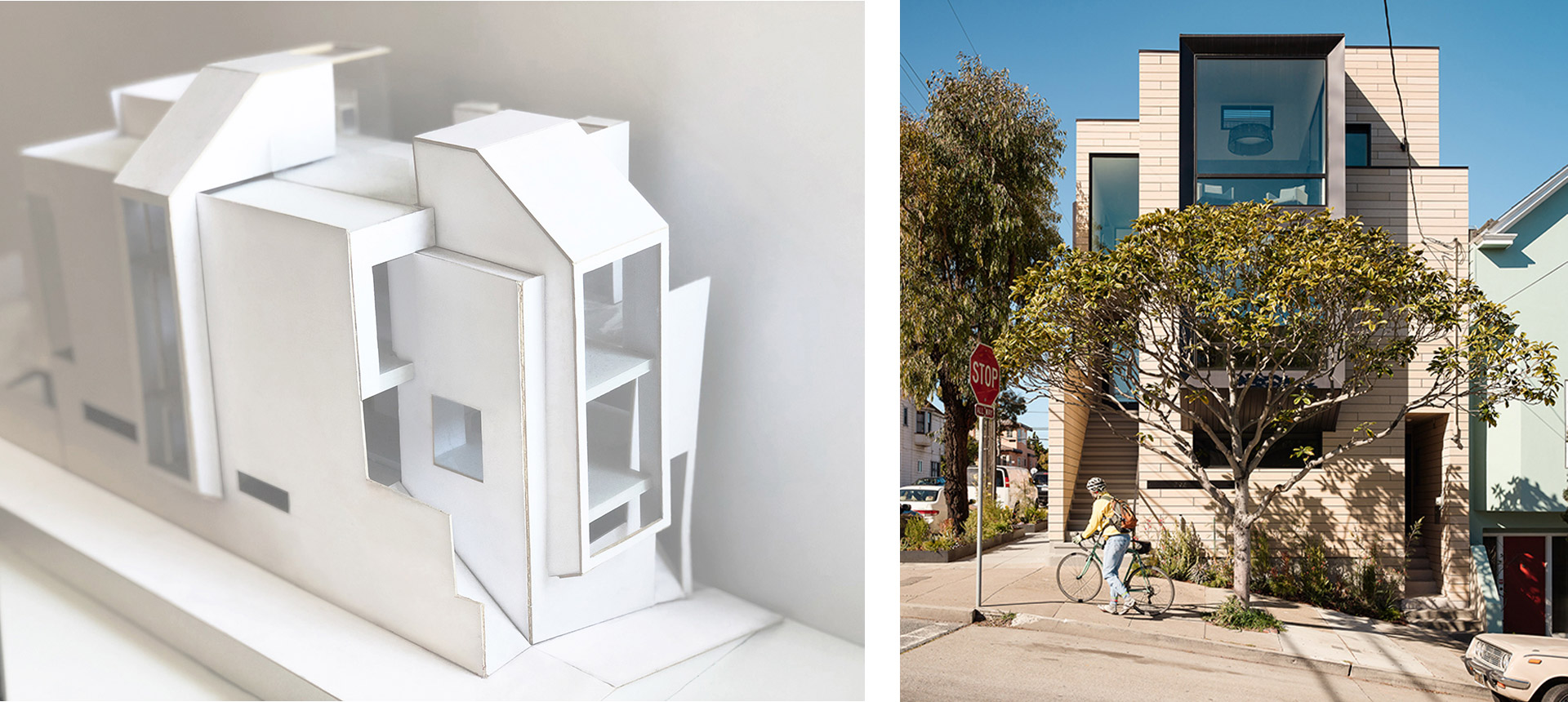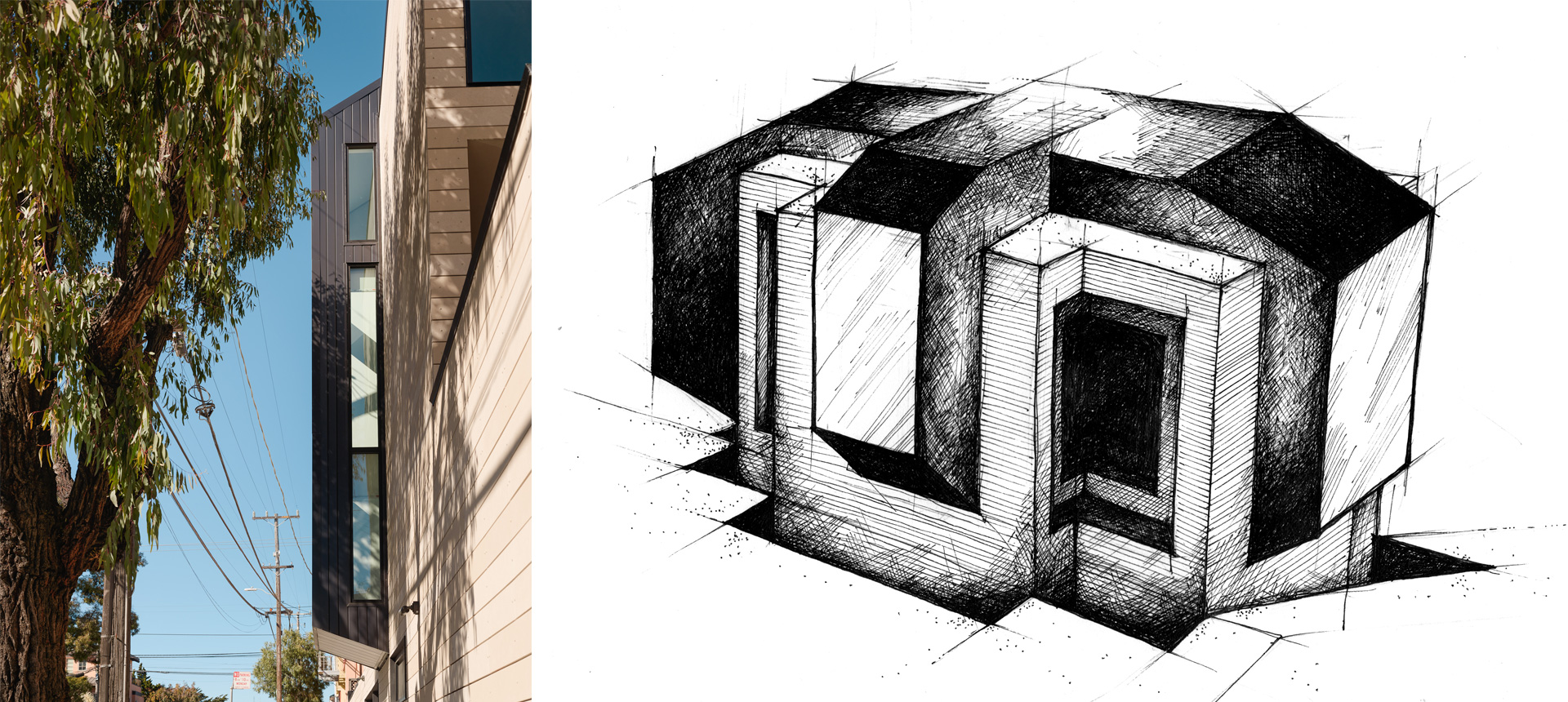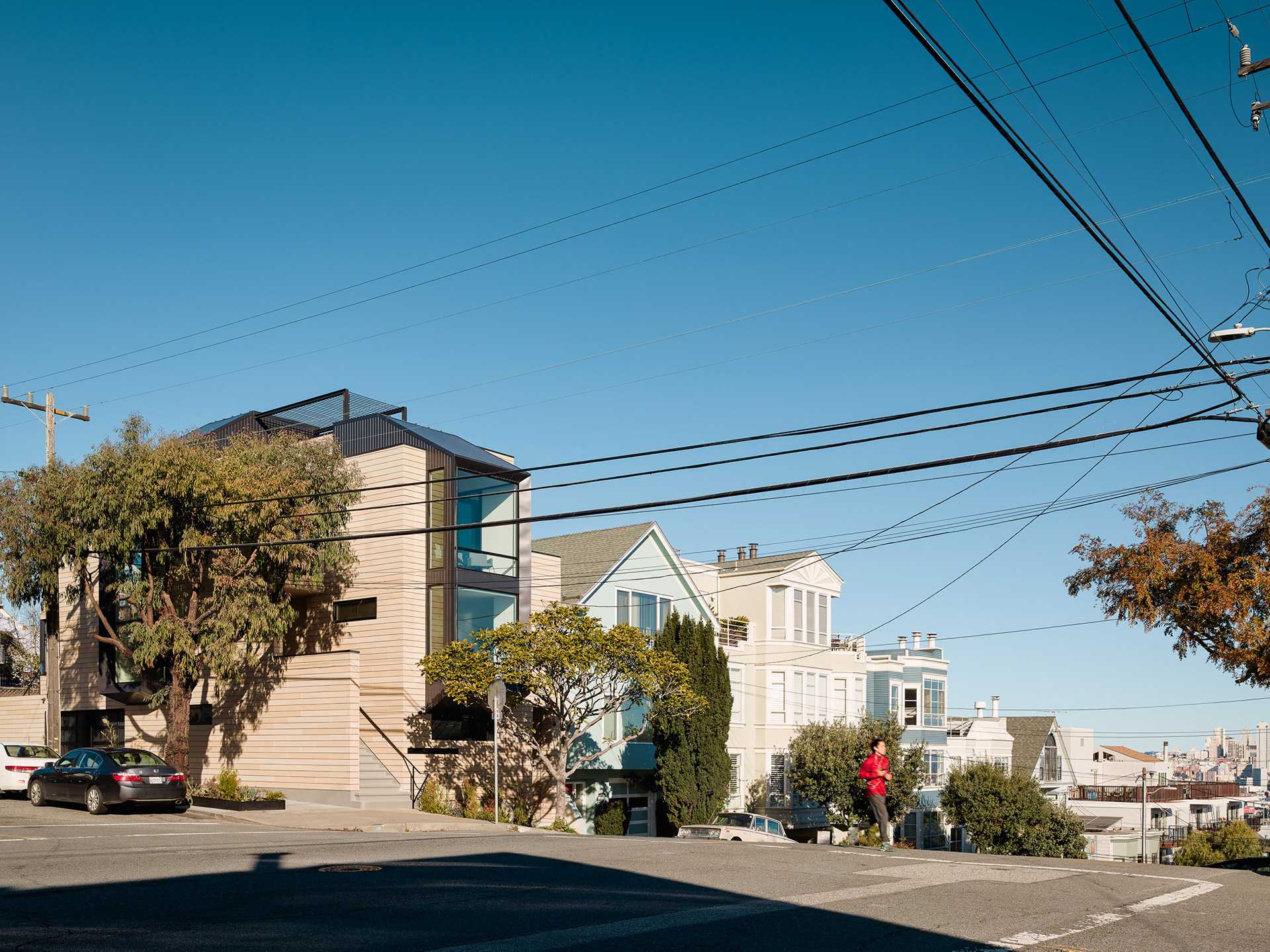
Rhode Island
On the peak of San Francisco’s Potrero Hill, a new structure emerges from the memory of the land. The home opens up to the view as you move up the floors, as the programming shifts from passive (sleeping, studying) to active (living, eating, viewing, entertaining).
The form engages conceptually with a theory in psychology: that the ability to see but not be seen is essential to human biological and psychological needs (Jay Appleton, Prospect and Refuge). The existing topography of the site speaks to one half of this relationship— the steep slopes of Potrero Hill offer expansive views across the City— while its history speaks to the other: long ago, these hills were shrouded in dense forest and scattered with serpentine rock formations. The project takes advantage of the views while recalling the shelter and protection offered by those natural forms.
The materiality of concrete cladding and aluminum paneling echo this dialectical concept. The aluminum penetrates the body of the concrete and is anchored within it, while its expansion outside of the box’s bounds offers shelter to the project’s strategically placed voids: the roof deck, set atop the structure, is hidden from the street view. From within, a panoramic view of the Bay unfolds.
Year: 2018
Location: San Francisco, CA
Square Footage: 3,000
Typology: Single Family Residential




